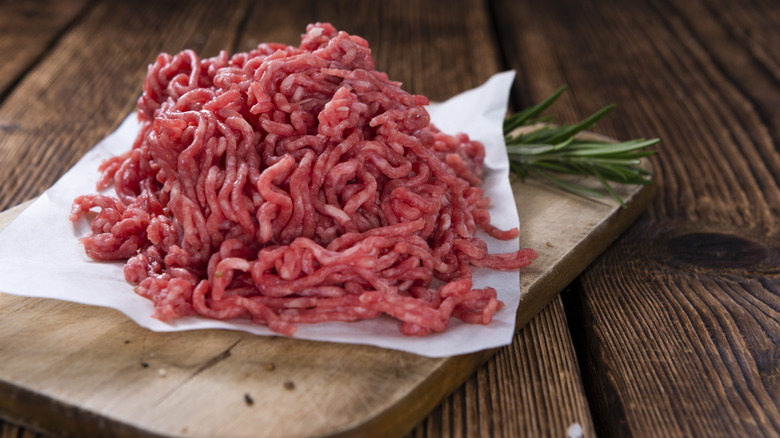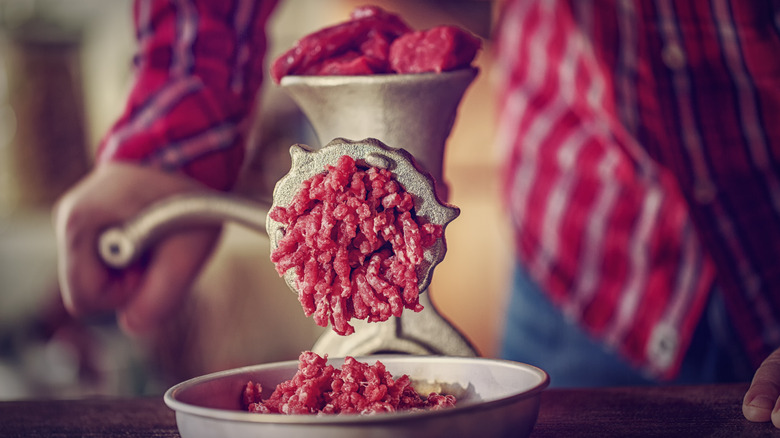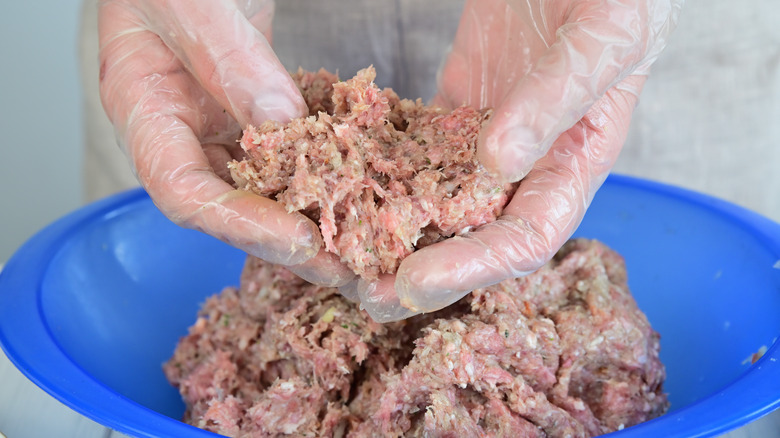Why Ground Meat Spoils Faster Than Standard Cuts
Ground meat, and in particular ground beef, is a staple in many American households. According to a 2019 study published in the journal Plos One, ground beef makes up about 62% of all beef sold in the United States. Other popular types of meat can be ground too, including veal, pork, and poultry.
Despite its popularity and versatility, ground meat tends to go bad faster than other larger cuts of meat. This is largely due to the way ground meat is prepared and processed. Grinding the meat creates more exposed surface area, which can lead to the development of both spoilage and pathogenic bacteria. The growth of these can lead to bad meat and foodborne illness, so it's important that you follow proper storage recommendations and only keep ground meat in your refrigerator for two days after you buy it.
Ground meat is processed more than other cuts of meat
When ground meat is processed, inherently more surface area of the meat is exposed to air because the meat gets ground into very small pieces. This gives more of a chance for bacteria to attach to the meat, which can cause it to go bad much faster than other larger cuts of meat, such as steaks, roasts, or chicken breasts.
According to the U.S. Department of Agriculture (USDA), there are two types of bacteria that can develop in ground meat that can cause it to go bad: spoilage bacteria and pathogenic bacteria. Even if the bacteria isn't harmful and doesn't cause foodborne illness, it can still affect the quality of the meat, leading it to taste less flavorful, smell bad, and feel sticky. This is the case with spoilage bacteria. Pathogenic bacteria on the other hand, such as Salmonella, can lead to foodborne illness.
Grinding also causes any bacteria already present in the meat to be mixed through to more of the meat. This can lead to rapid bacteria multiplication, especially if the meat is stored above 40 degrees Fahrenheit. To prevent the growth of bacteria, the USDA recommends cooking or freezing ground meat within two days of purchasing it.
Proper freezing techniques can also help your meat stay fresh, too. When you're ready to thaw frozen meat, the USDA says the best technique is to thaw your meat in the refrigerator because the colder temperatures help prevent bacteria growth. Once it's thawed, either cook or refreeze the meat within 24–48 hours.
How to tell if ground meat is bad
If you're near that one to two-day cutoff and you're not sure if your meat is still good to eat, there are a few ways you can tell. First, look at the color of your meat. If the meat turns brown or grey on the outside, this could be a sign that it's starting to rot and go bad. If the meat is grey or brown on the inside though, you don't need to worry. This is most likely because the interior meat wasn't exposed to oxygen. The USDA has some other tips for determining if your ground meat is bad as well. They recommend touching the meat; if it's sticky or slimy, it could be spoiled, and it's best to throw it out. You can also do a smell test. If the meat smells tangy or rancid, it's likely spoiled.
Finally, you can check the best-by or sell-by dates on the package. While these expiration dates aren't regulated and don't provide a full picture of the safety of your meat, they can be a helpful guide regarding when you should and shouldn't use the product. If you do eat meat that has gone bad, you could unfortunately end up with food poisoning, so it's always best to err on the side of caution.


